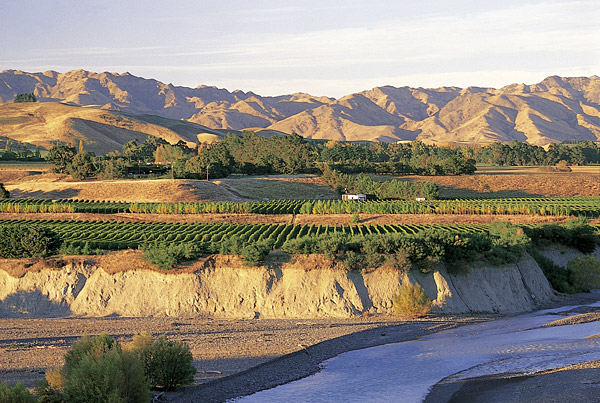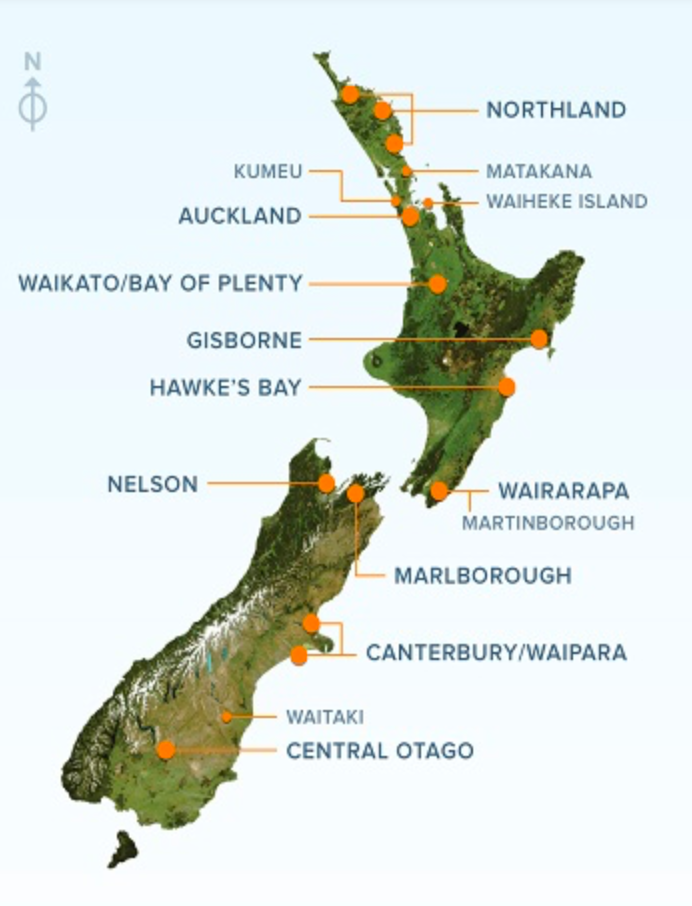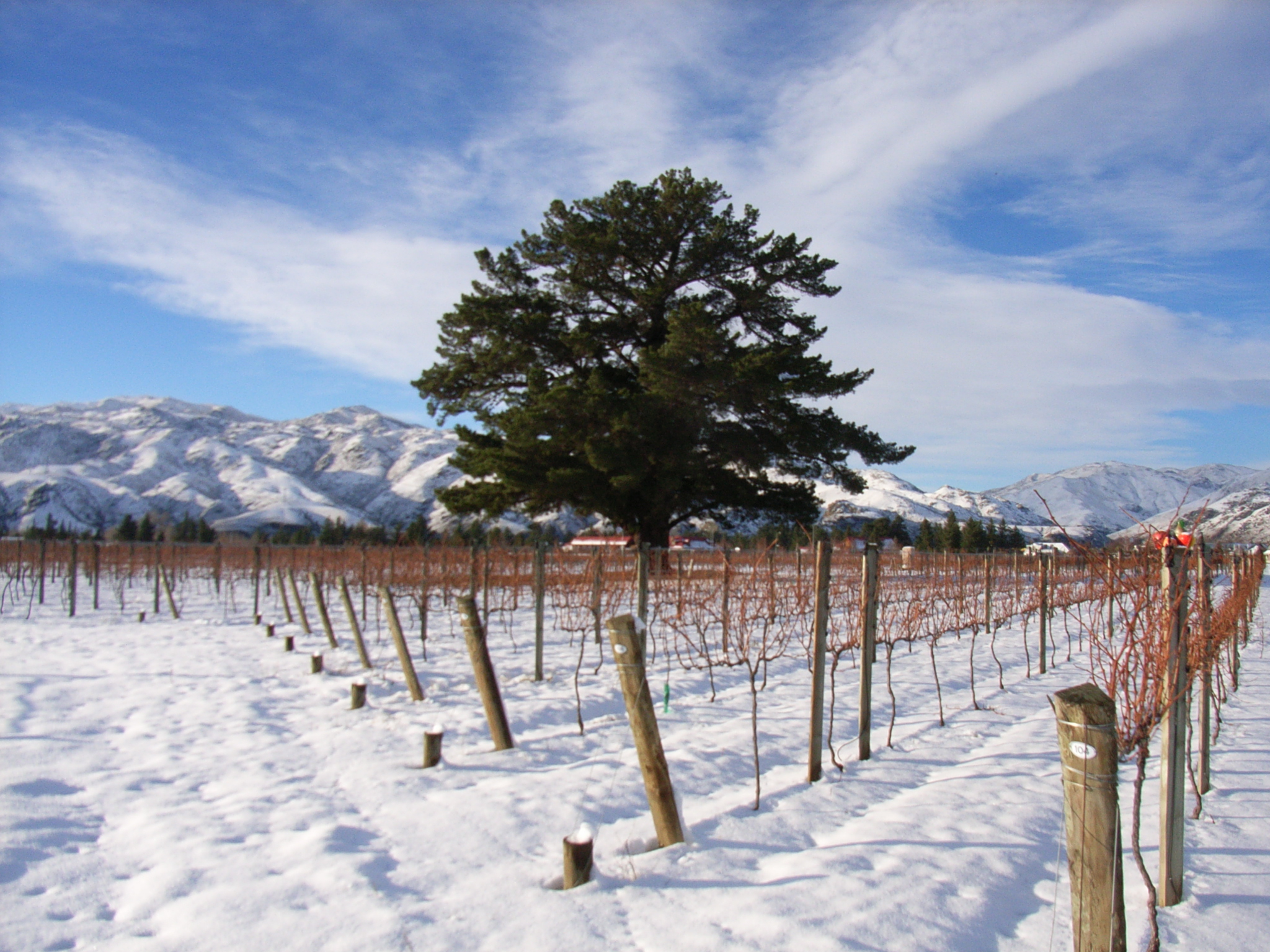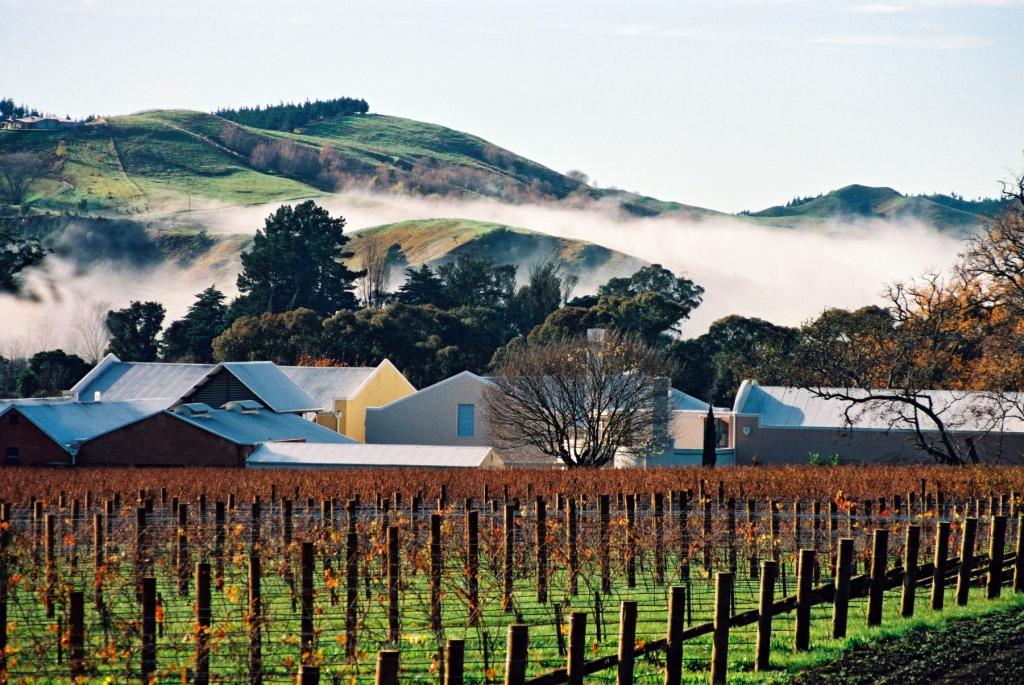
Wakefield Downs Vineyard in Awatere Valley, Marlborough, New Zealand
There may not be a single, serious wine lover in the United States who hasn’t tried New Zealand Sauvignon Blanc at least once. Yet most Americans—wine drinkers or otherwise—know almost nothing about New Zealand, let alone its wine regions.
Now’s a perfect time to boost your Kiwi wine knowledge. Spring foods pair very well with crisp, New Zealand Sauvignon Blanc. And May 4 is International Sauvignon Blanc Day. So pour yourself a glass and drink up while you read up on New Zealand.
1. New Zealand is more isolated than any other major country. It’s closest, significant neighbor is Australia, 2587 miles away. That’s farther than Los Angeles is from Honolulu and San Francisco from New York City.
2. Because of its isolation, human settlement of New Zealand came very late relative to the the rest of the populated world. Polynesian settlers, the Maori, didn’t arrive until about 1,000 years ago. Europeans first caught sight of the islands in 1642. It was nearly 125 years later that they finally went ashore.
3. New Zealand is bigger than you think. Though it consists of several islands, most of its land mass is made up by just two, the North Island and South Island. But those islands span nearly 1,000 miles from north to south, from the 36th parallel to the 46th. South Island alone has about 70% the landmass of Great Britain. North Island is roughly half Britain's size.

4. New Zealand is also very narrow, only about 250 miles across at its widest. The climates of all but one of its wine regions are strongly influenced by the ocean.
5. The one exception is Central Otago, which is in the southern quarter of the South Island and isolated from the ocean by both distance and mountains. It has a semi-continental climate.

Wooingtree Vineyard in Central Otago, New Zealand's coolest growing region
6. While 1819 saw the first planting of grapes in New Zealand, no wine was made until 1830. And serious wine production didn’t begin until the 1890s. Now, there are more than 2000 vineyards.
7. There was no Sauvignon Blanc at all in New Zealand until 1979. The country’s top grape back then was Muller-Thurgau. These days, Sauvignon Blanc accounts for about 60% of New Zealand’s total planted acres.
8. The vast majority of the Sauvignon Blanc, nearly 50,000 acres, is planted in Marlborough which is in the northern part of the South Island. The next largest New Zealand Sauvignon Blanc region, Hawke’s Bay, only has about 2,500 acres planted.
9. Central Otago is the southernmost wine appellation in the world—only 3,100 miles from Antartica. It also has the highest elevation of New Zealand’s wine regions. Consequently, Central Otago is one of the world’s coolest wine regions and very well suited to Chardonnay and Pinot Noir.
10. Chardonnay represents 11% of New Zealand’s white wine production and, though small in total volume, Pinot Noir accounts for 72% of the red wine. These wines have been getting more and more international recognition for quality and have even beaten out the French in some competitions.
11. More robust red wines, primarily Merlot, Syrah and Cabernet Sauvignon, thrive on the North Island, particularly Hawke's Bay.
The New Zealand wine industry is serious about farming responsibly. 98% of its vineyards are certified sustainable. 7% are certified organic.

Te Mata Estate in Hawke's Bay
JJ Buckley has a range of New Zealand wine, not just Sauvignon Blanc, but Chardonnay, Pinot Noir, Riesling and more.
JJ Buckley guest blogger Fred Swan is a San Francisco-based wine writer, educator, and authority on California wines and wineries. His writing has appeared in The Tasting Panel and SOMM Journal. Online, he writes for his own site, FredSwan.Wine (formerly NorCalWine), PlanetGrape, and GuildSomm. He teaches at the San Francisco Wine School. Fred’s certifications include WSET Diploma, Certified Sommelier, California Wine Appellation Specialist, Certified Specialist of Wine, French Wine Scholar, Italian Wine Professional, Napa Valley Wine Educator and Level 3 WSET Educator. He's twice been awarded a fellowship by the Symposium for Professional Wine Writers.
Photos courtesy of NZWine.com